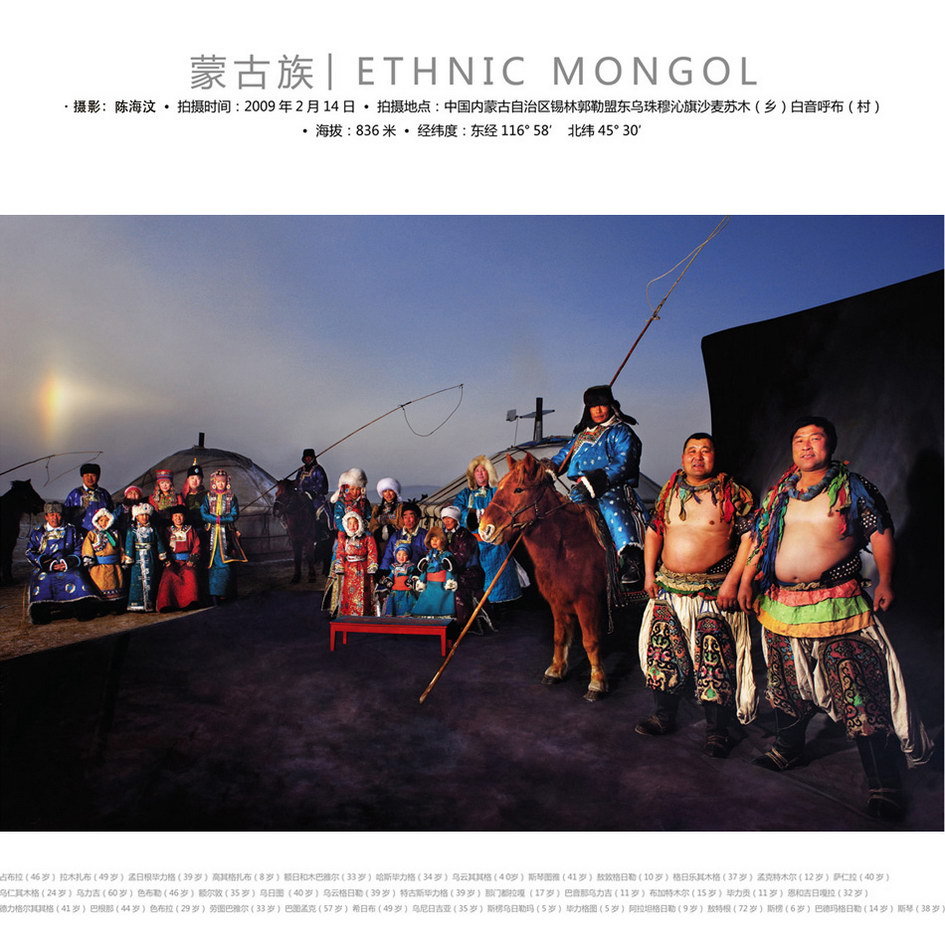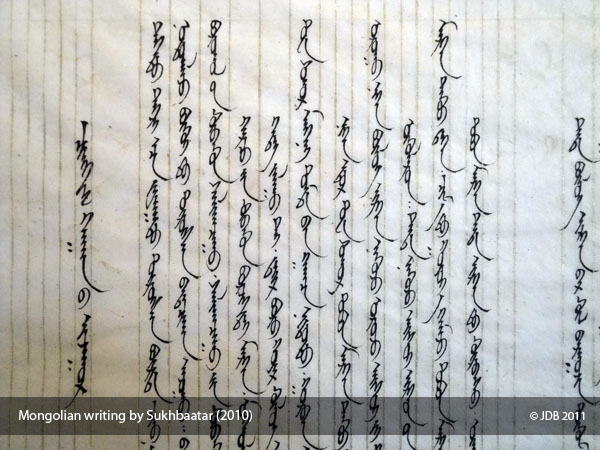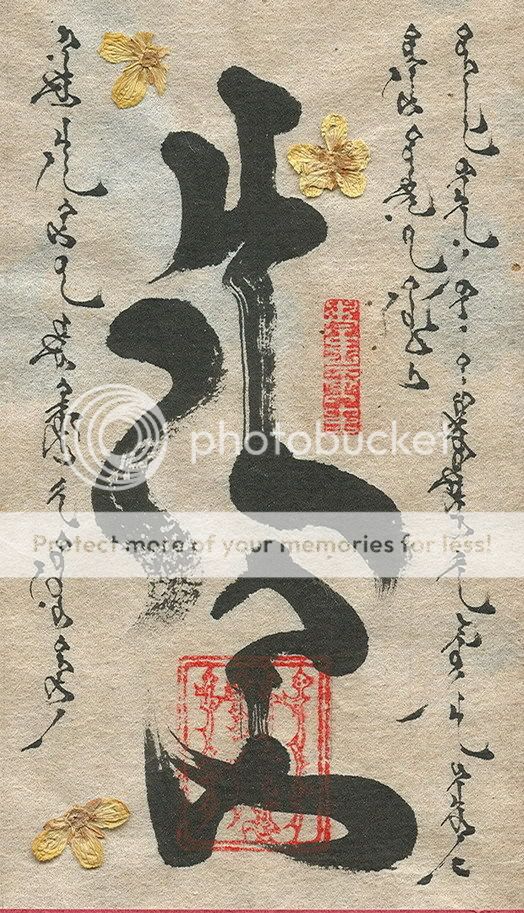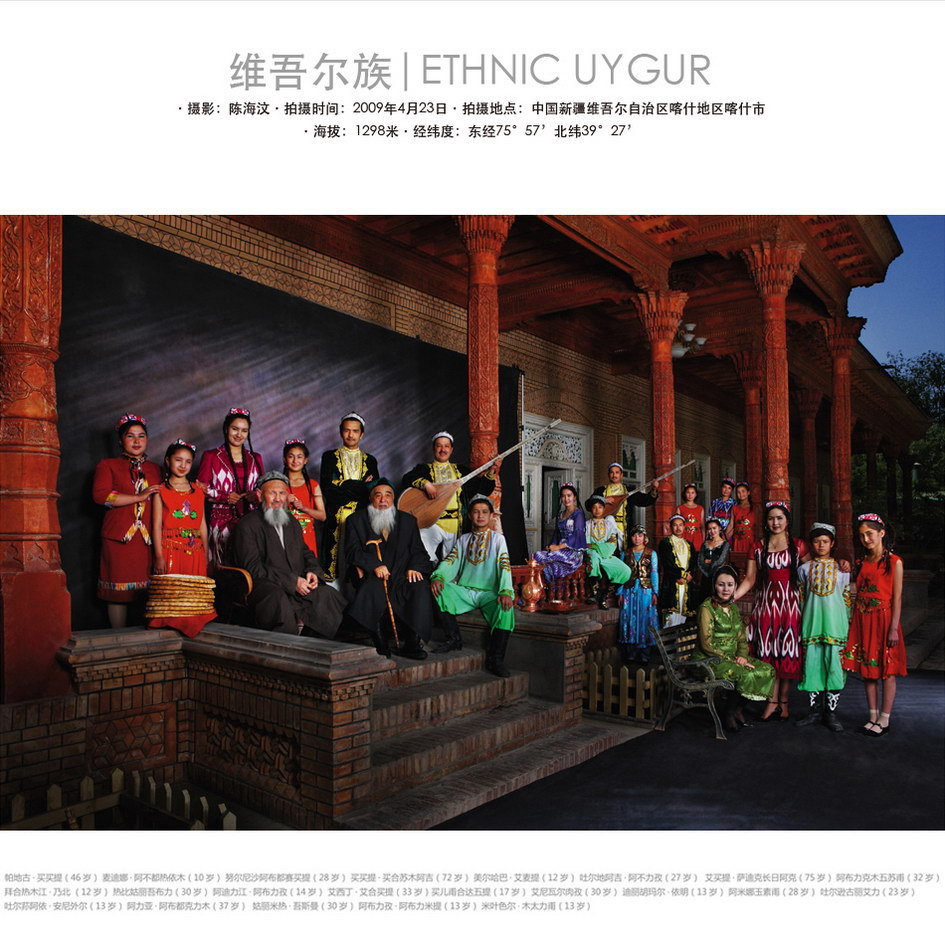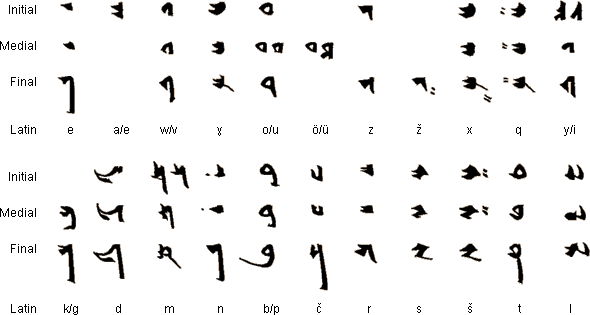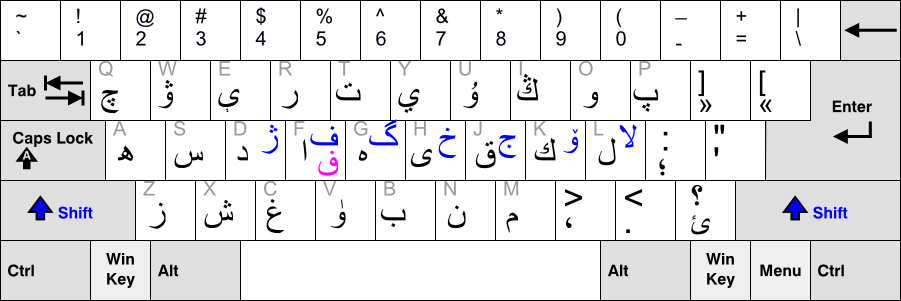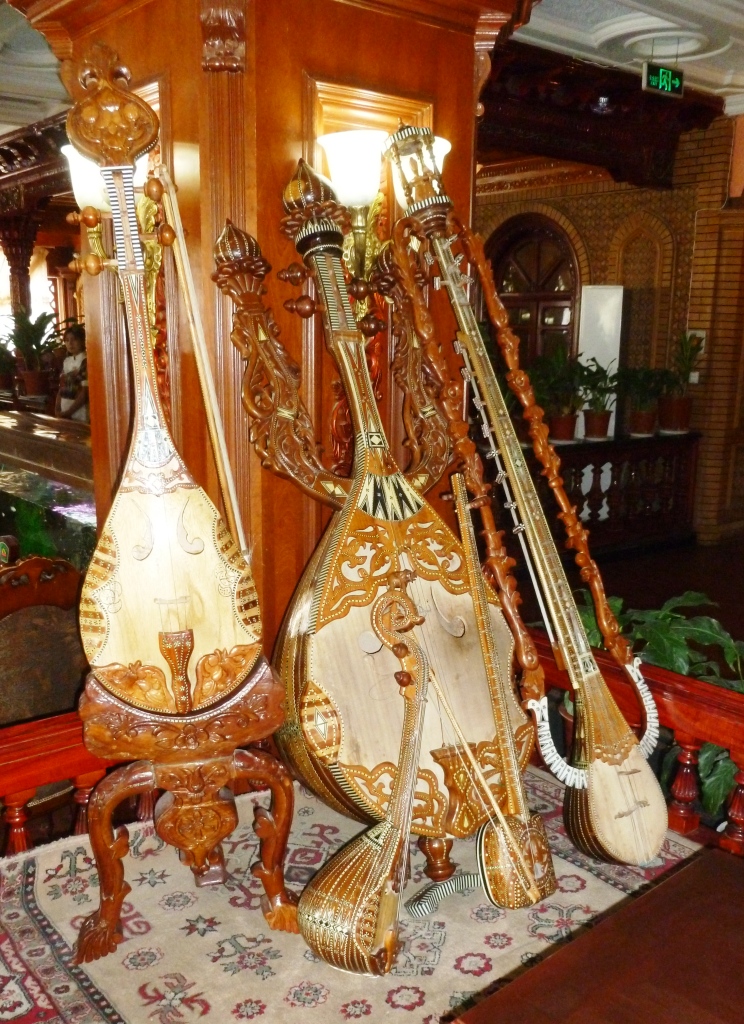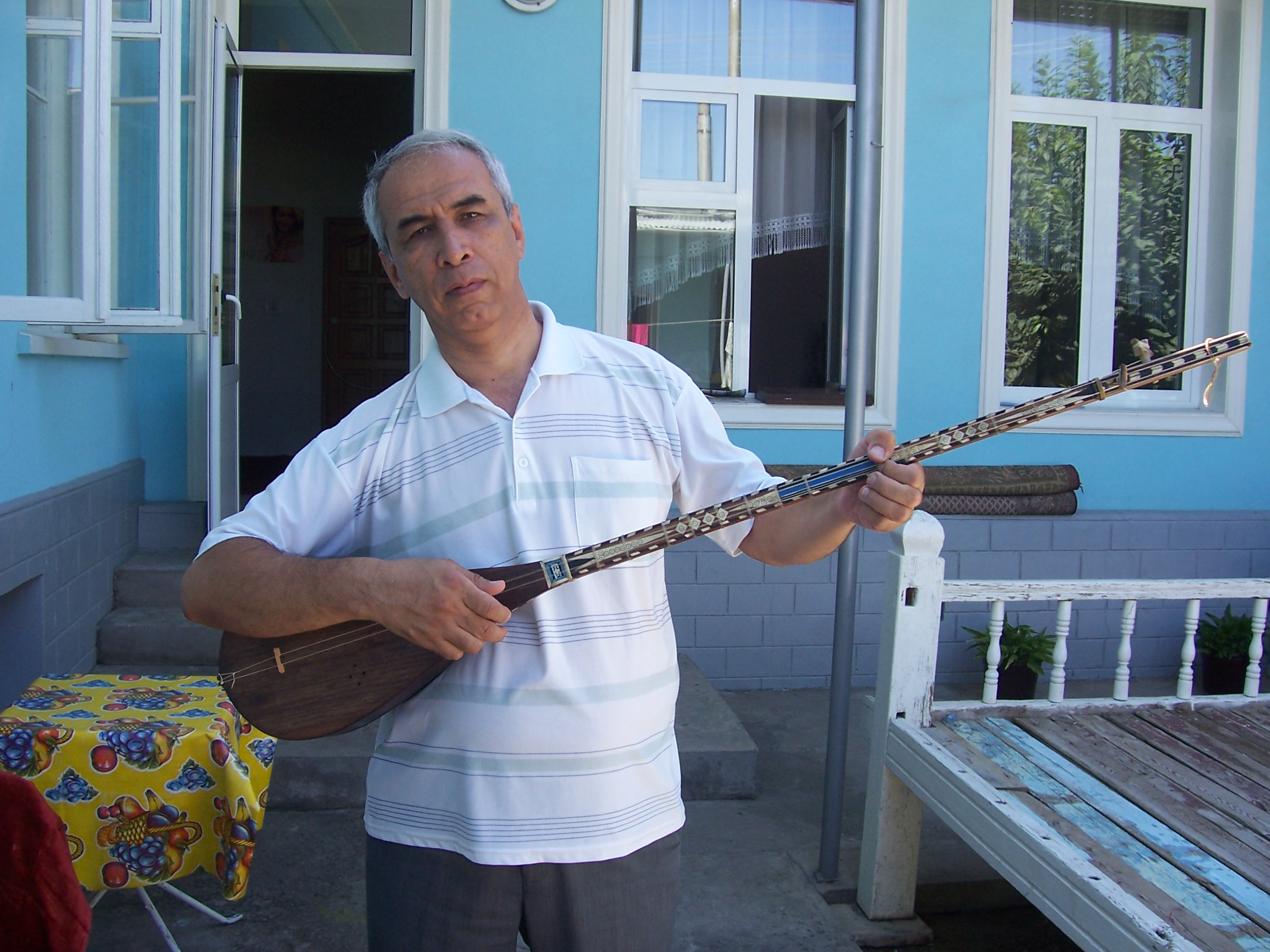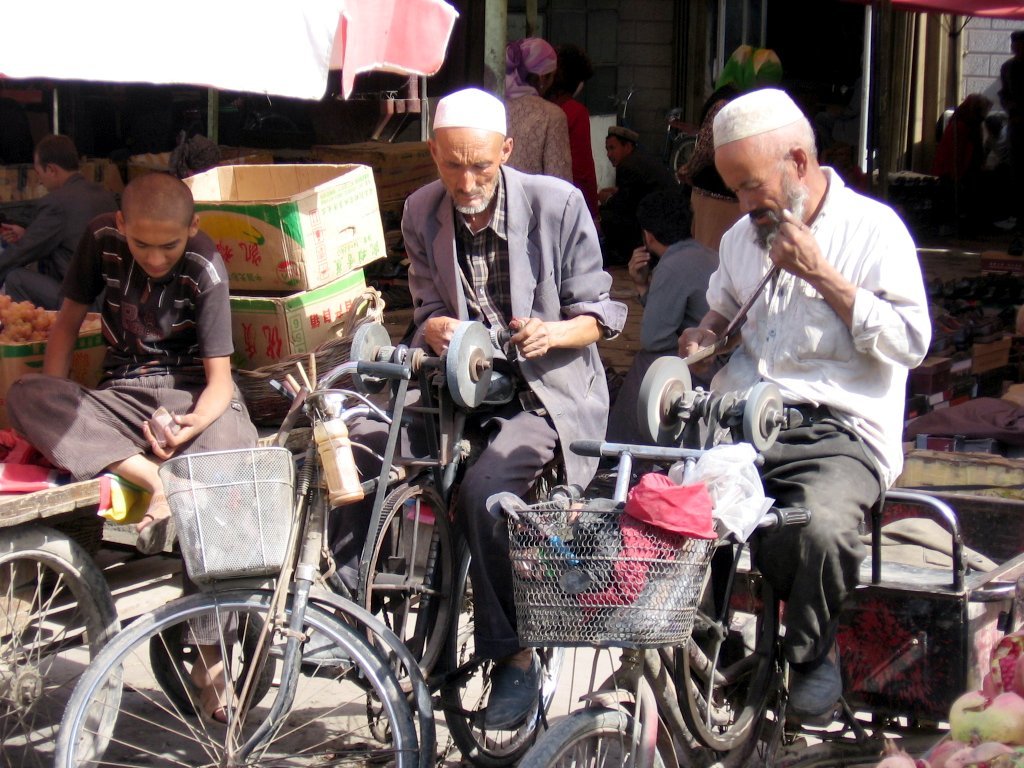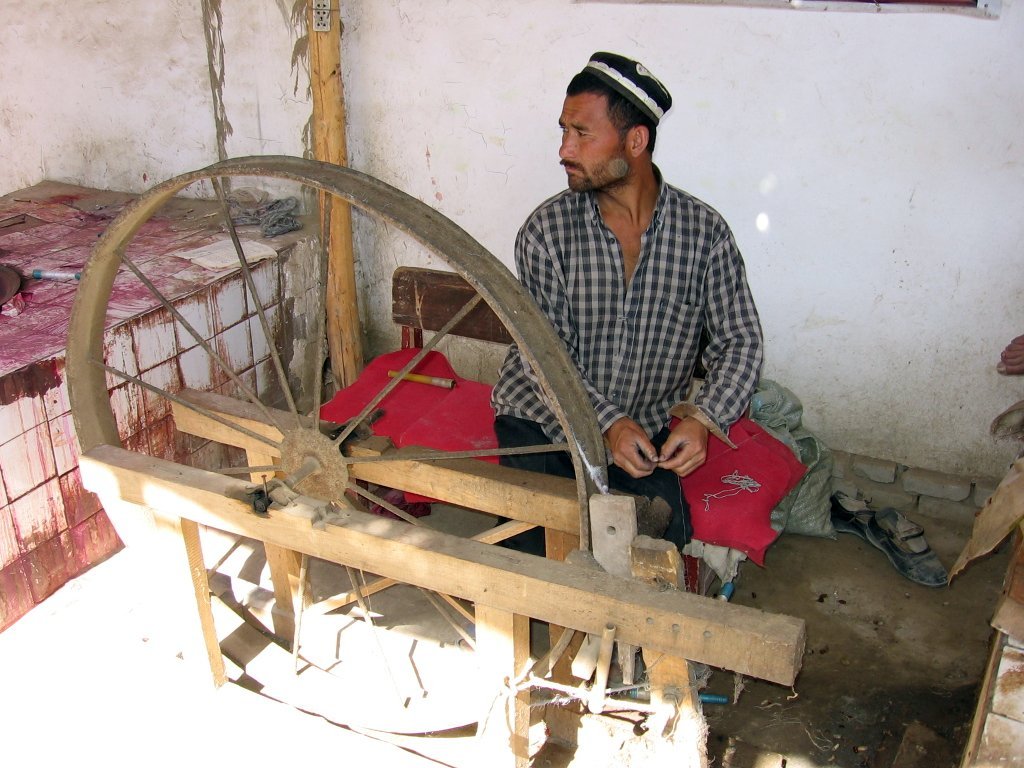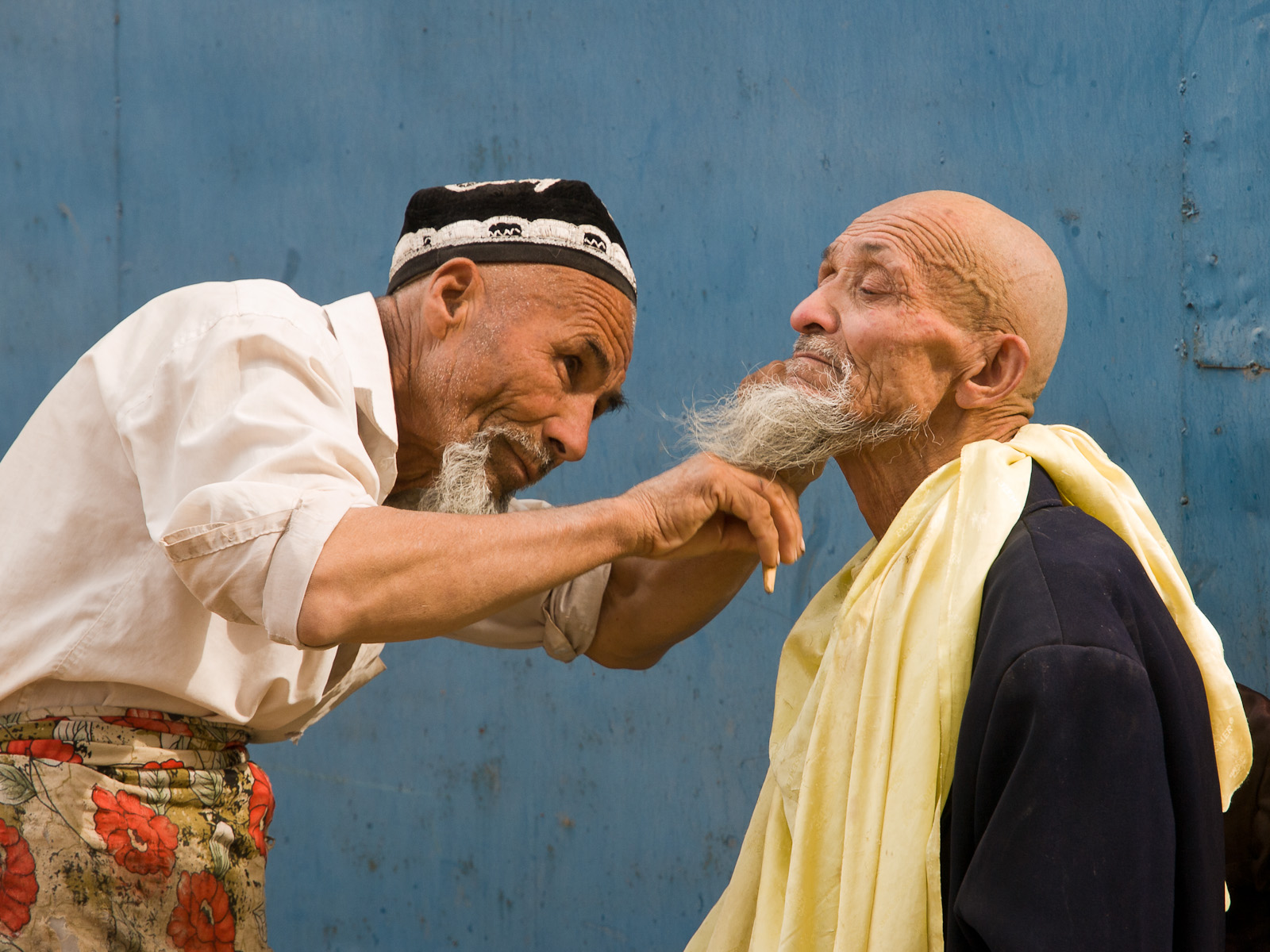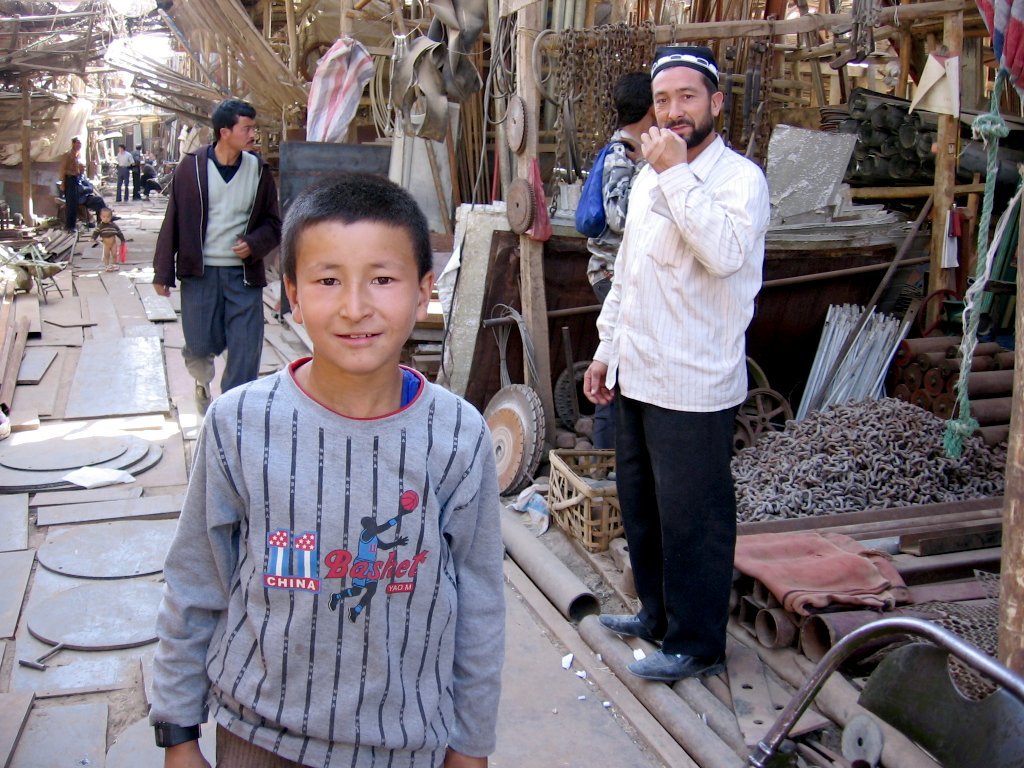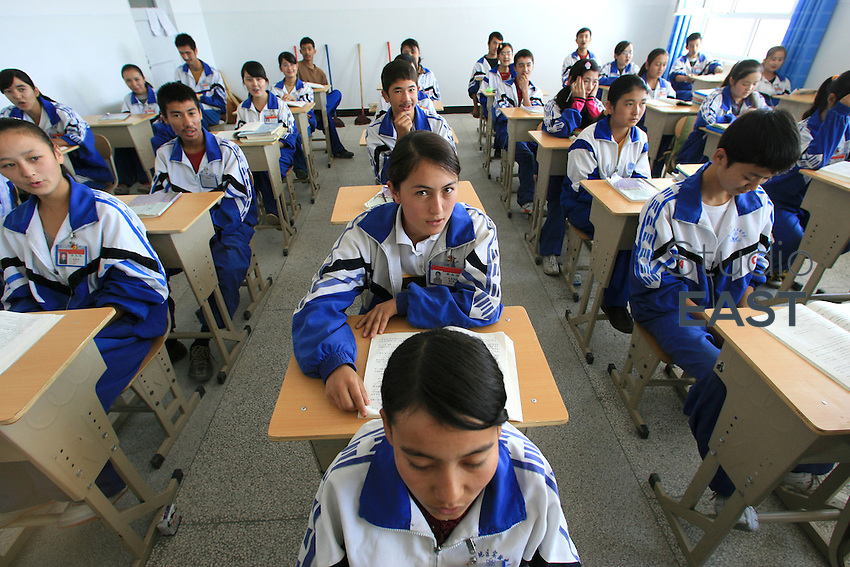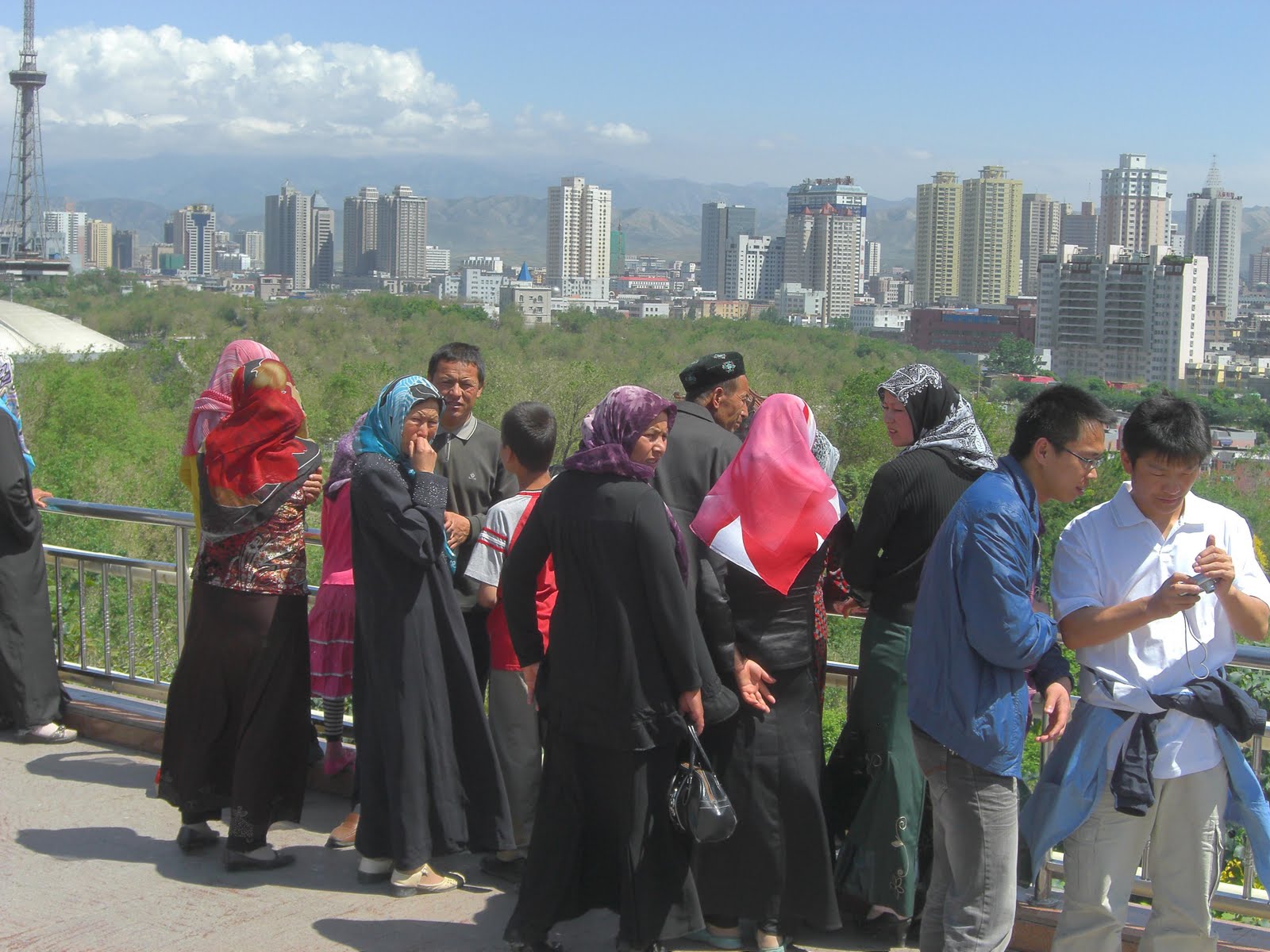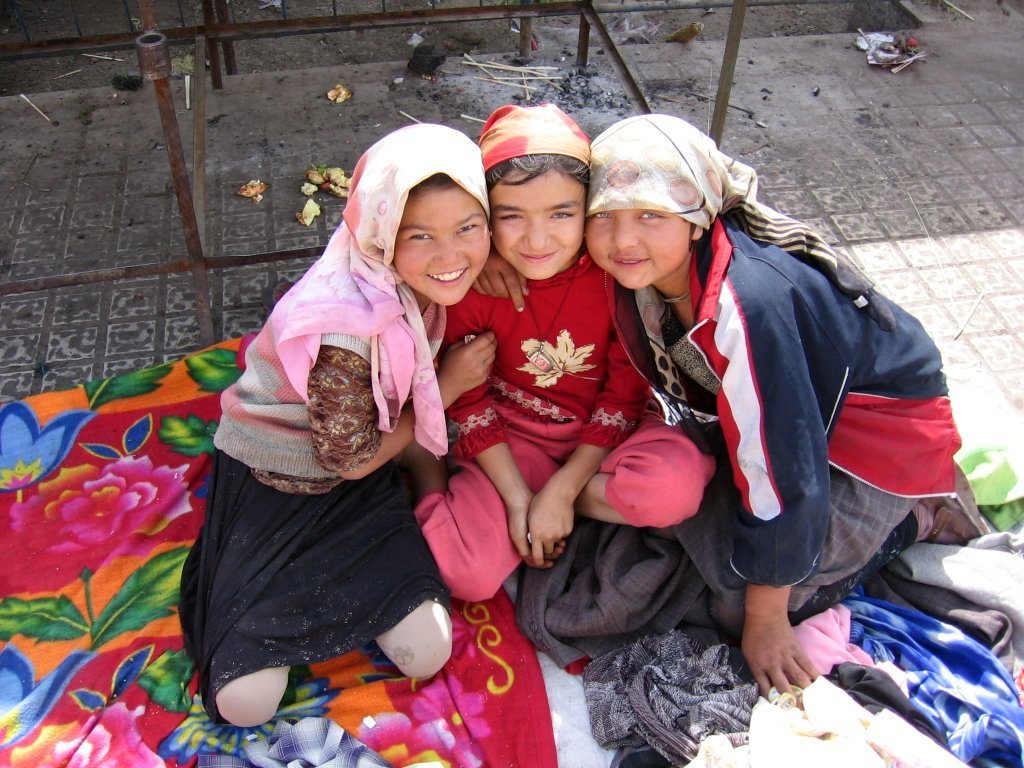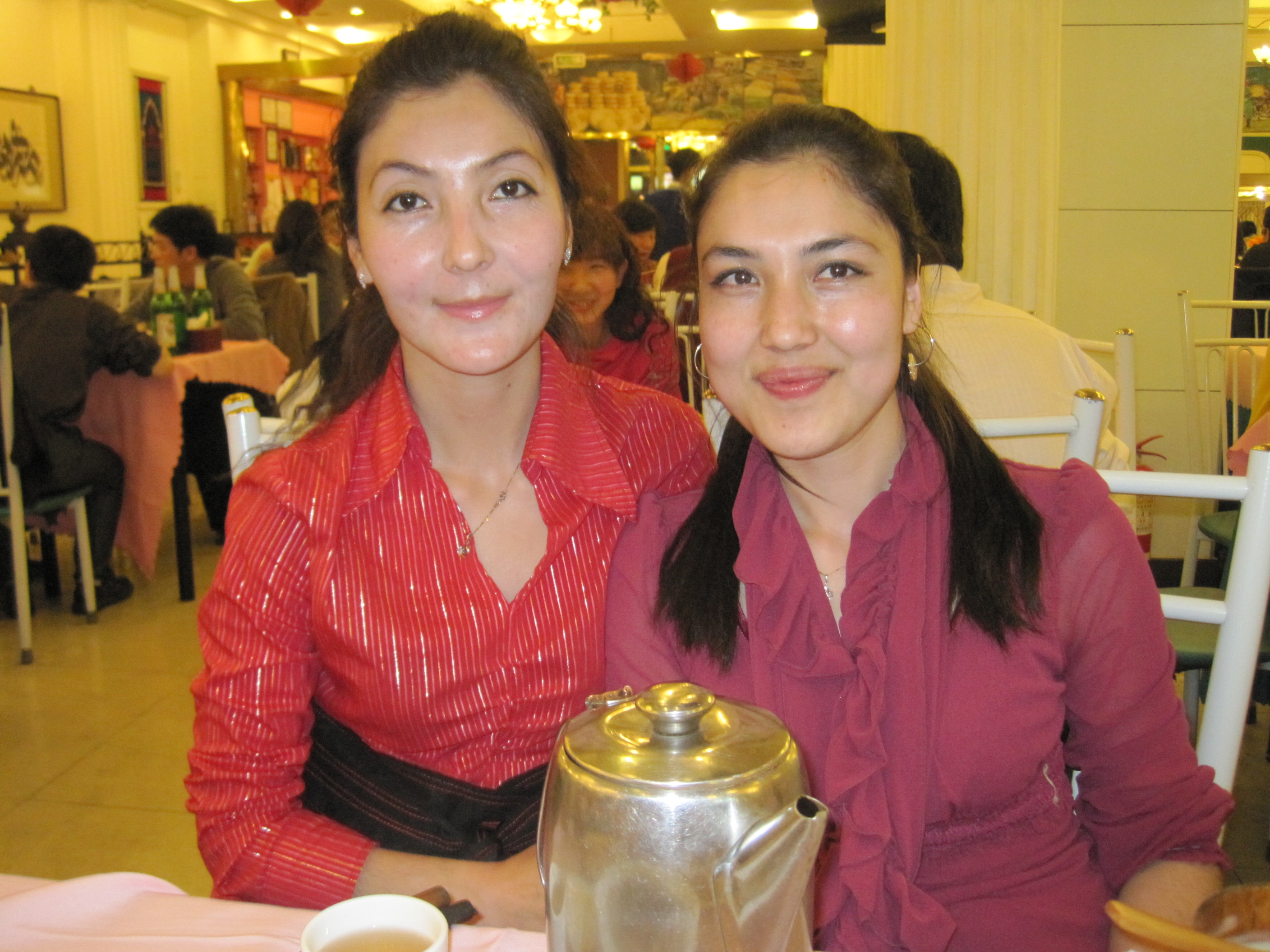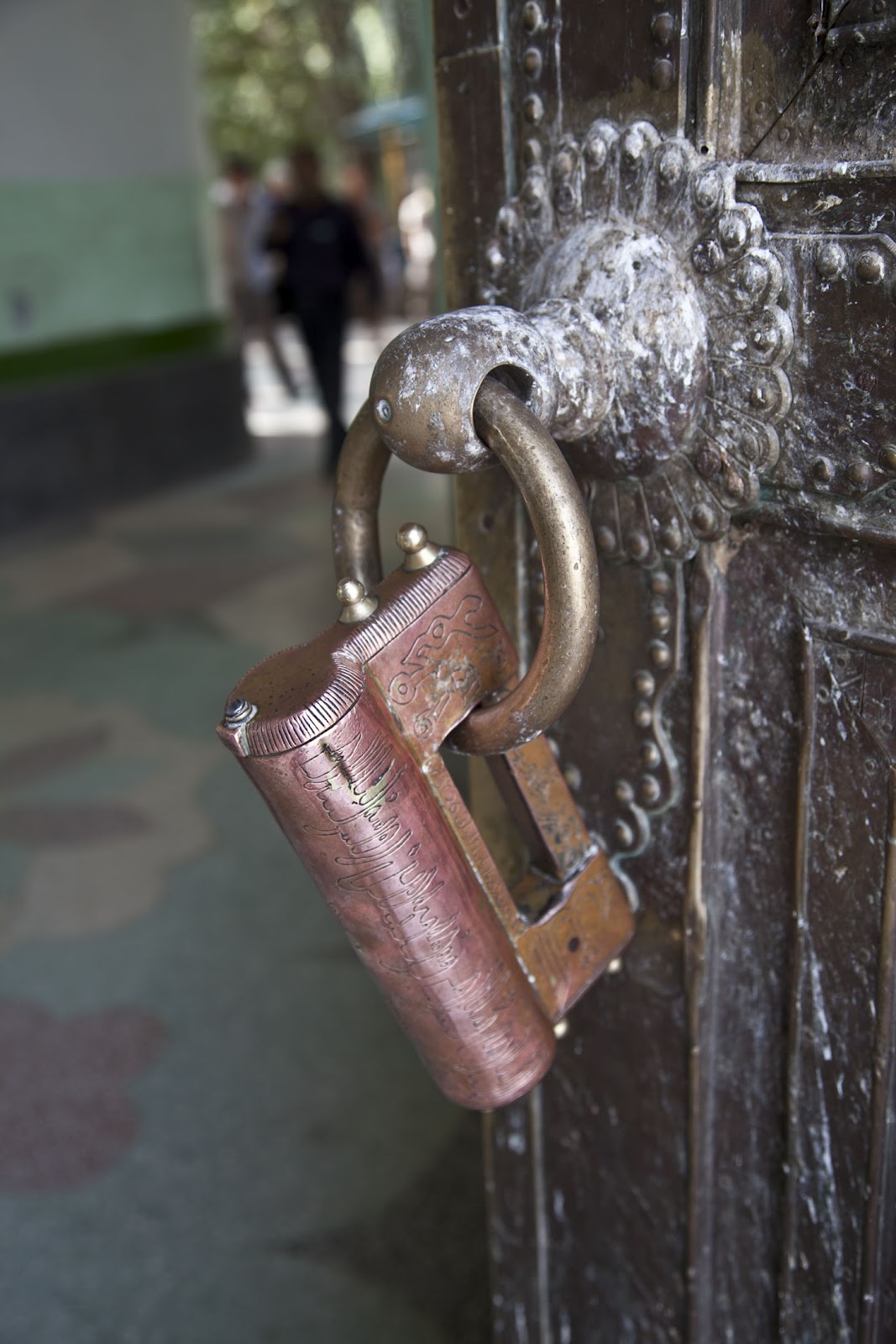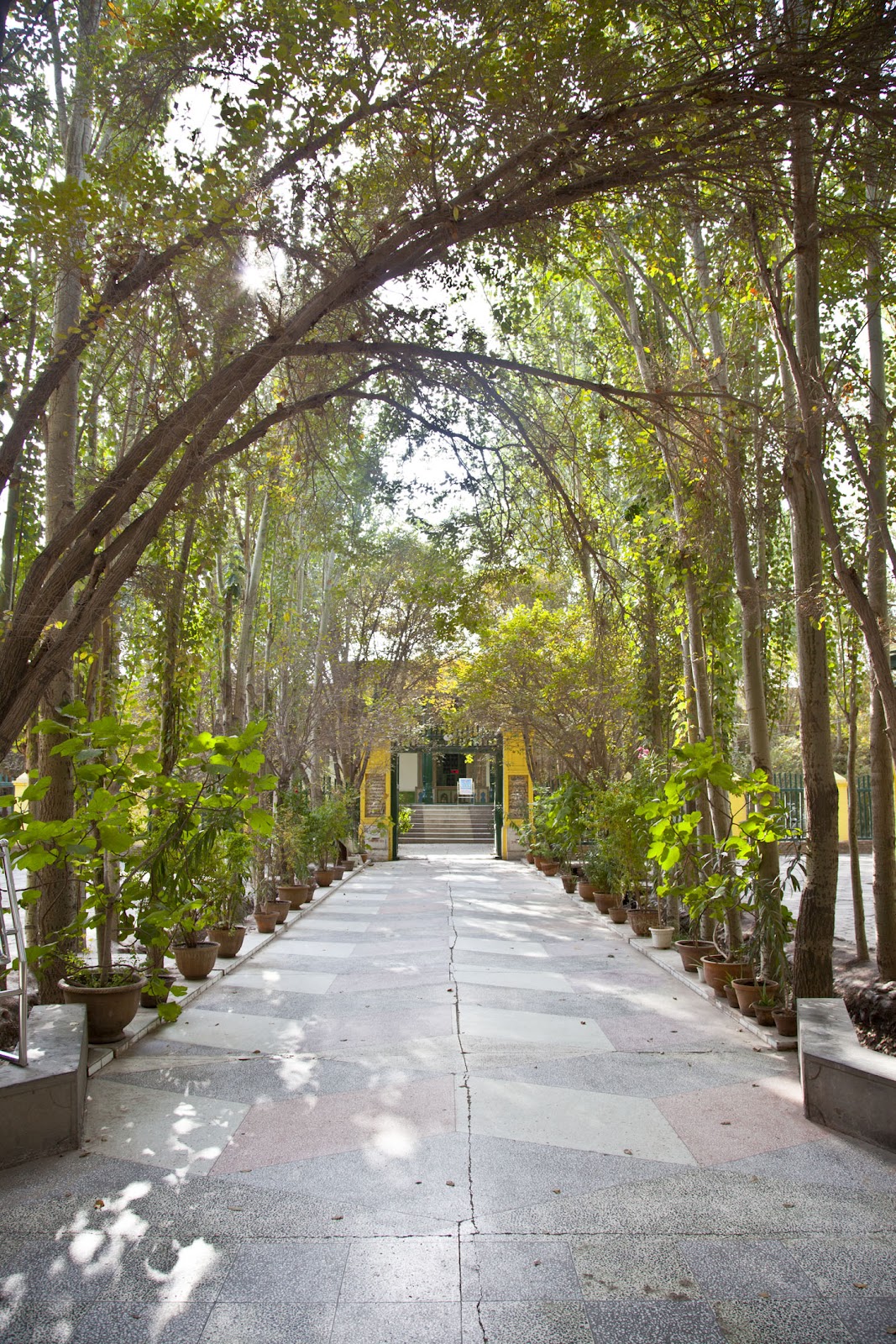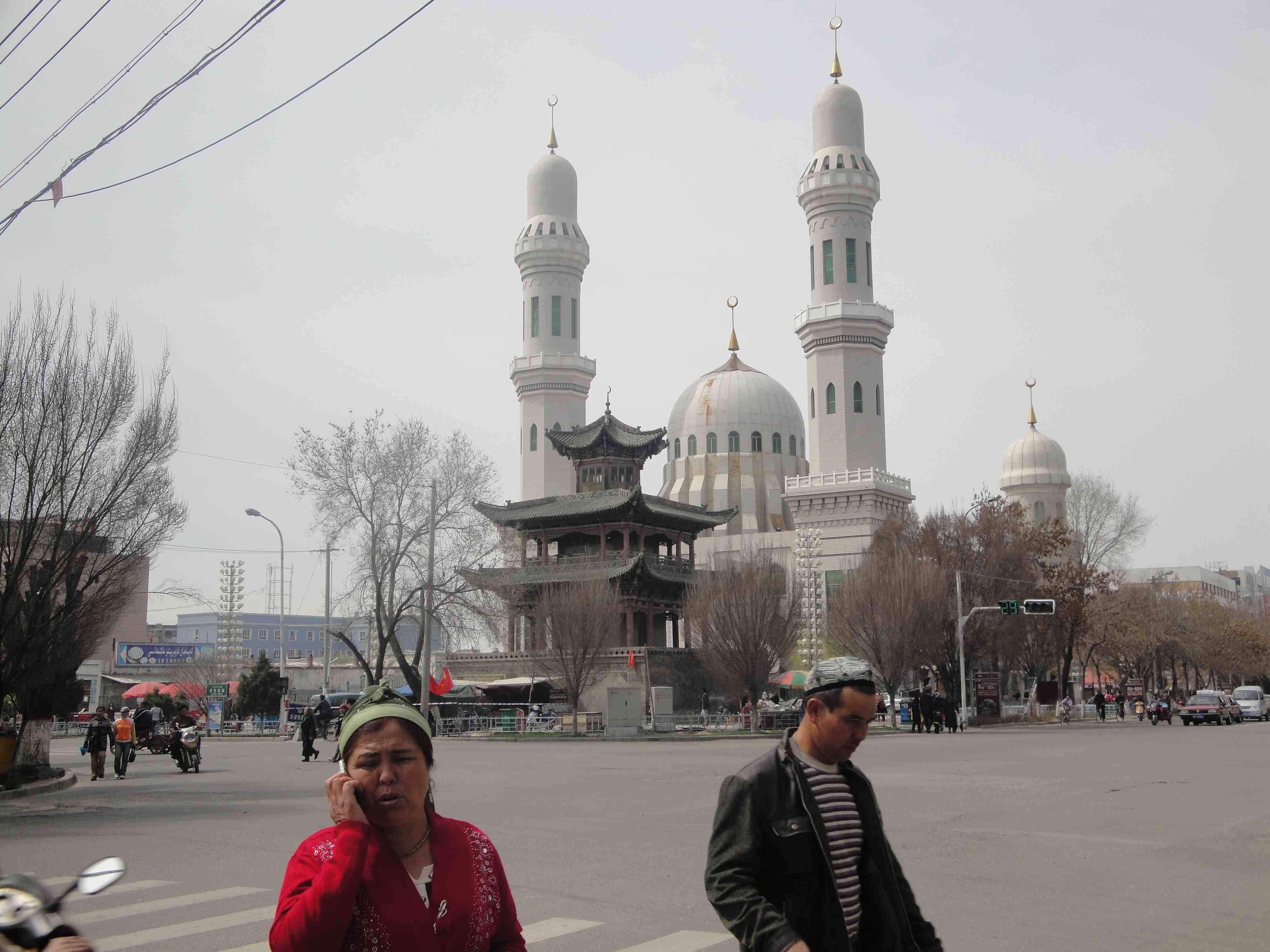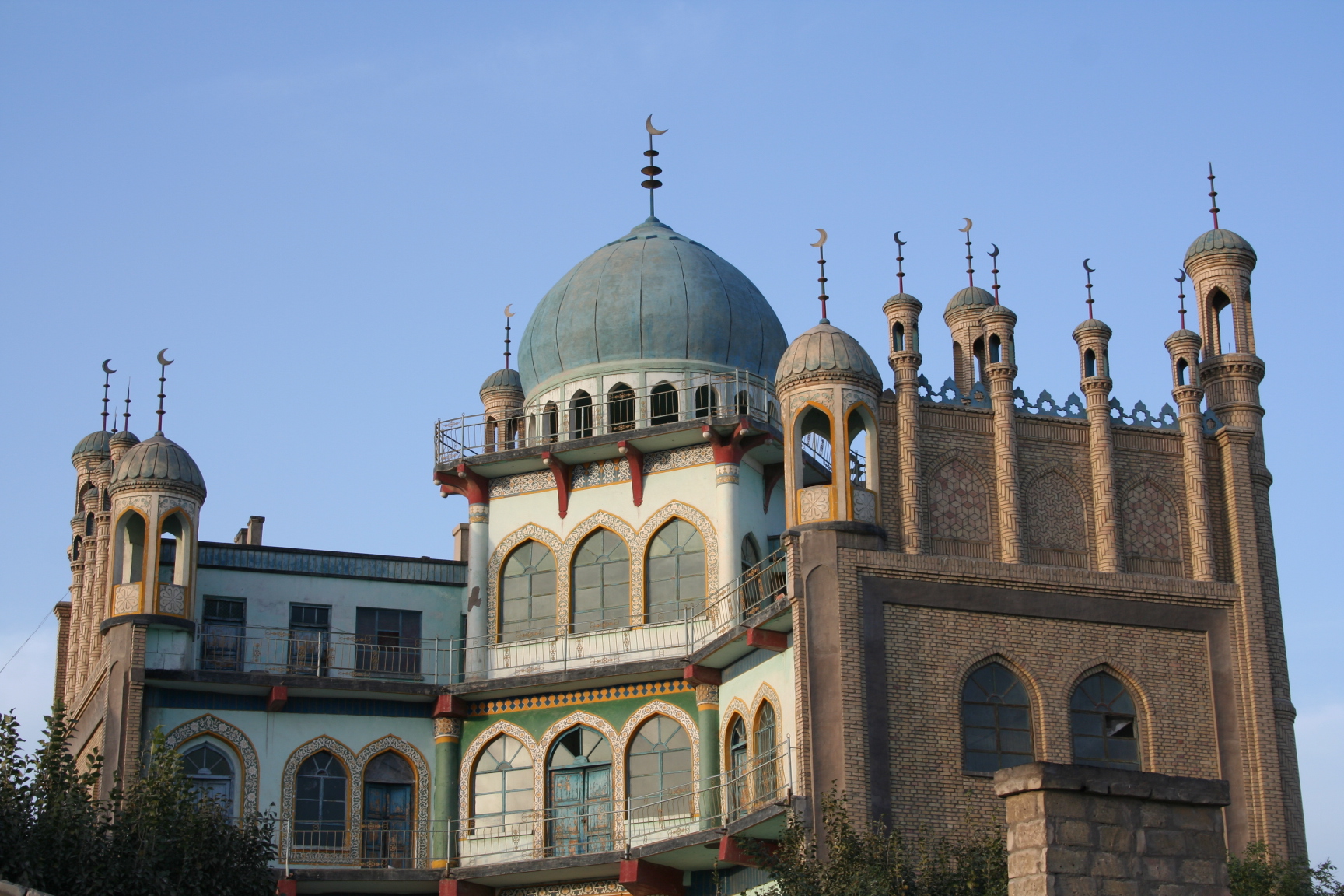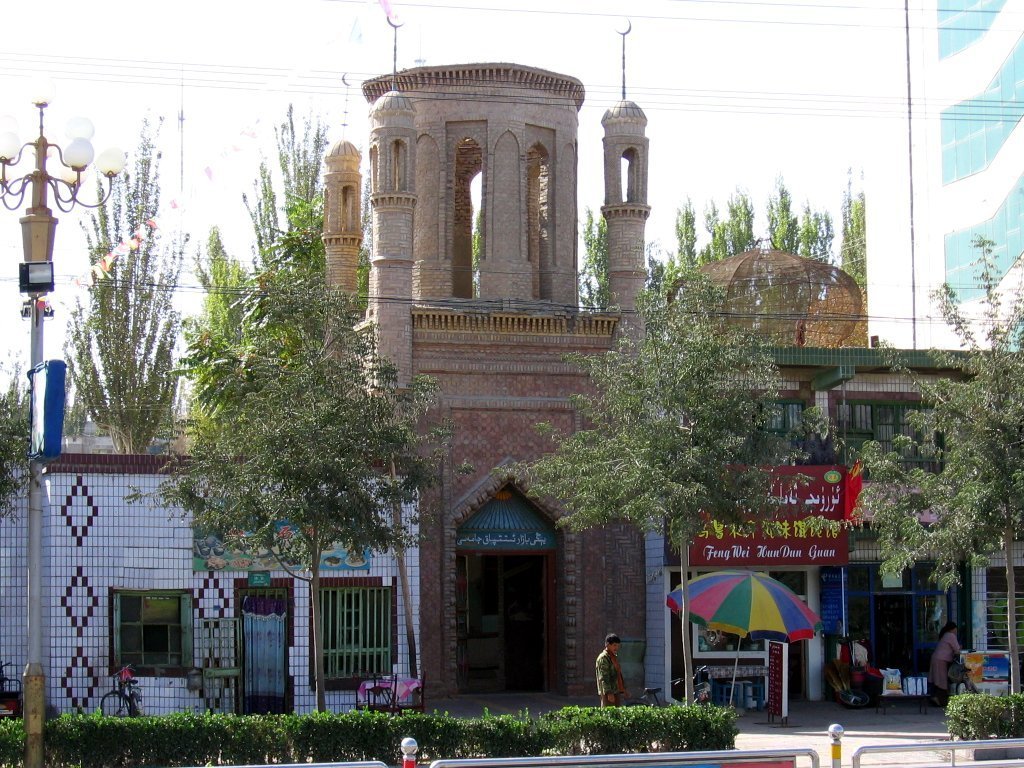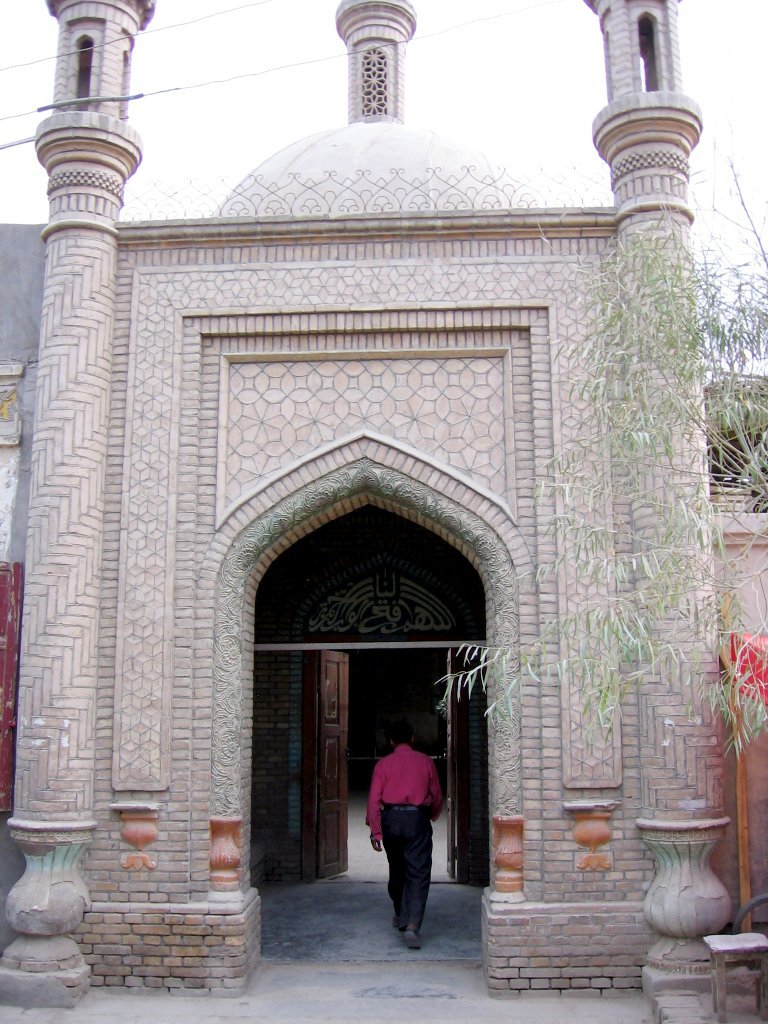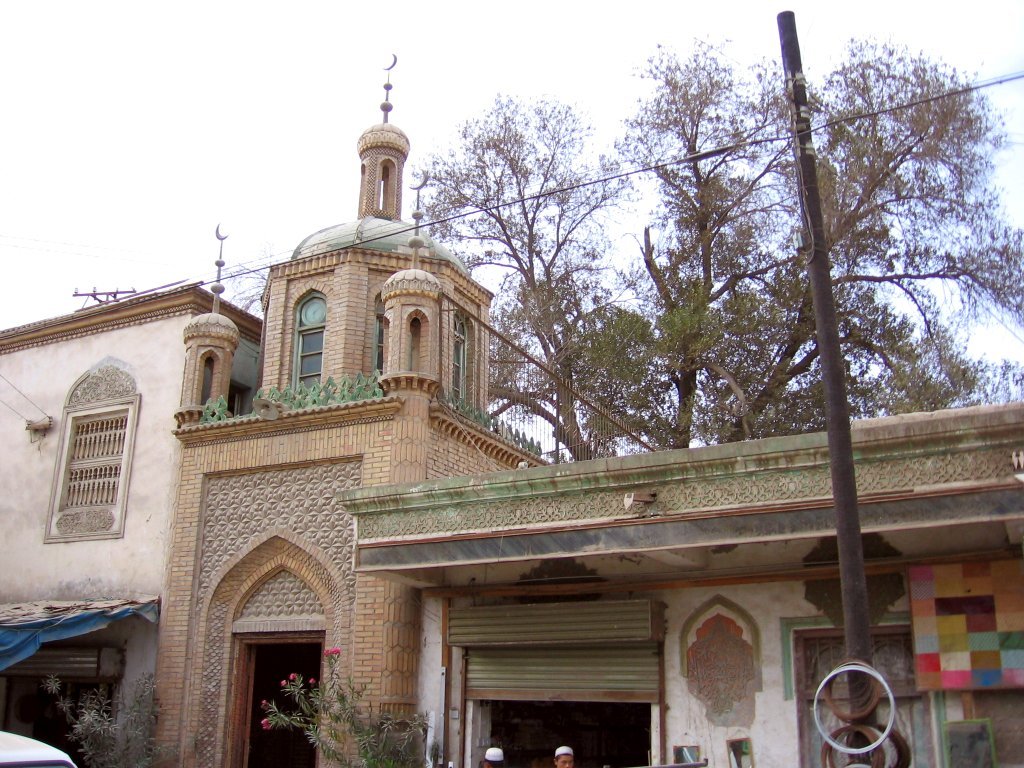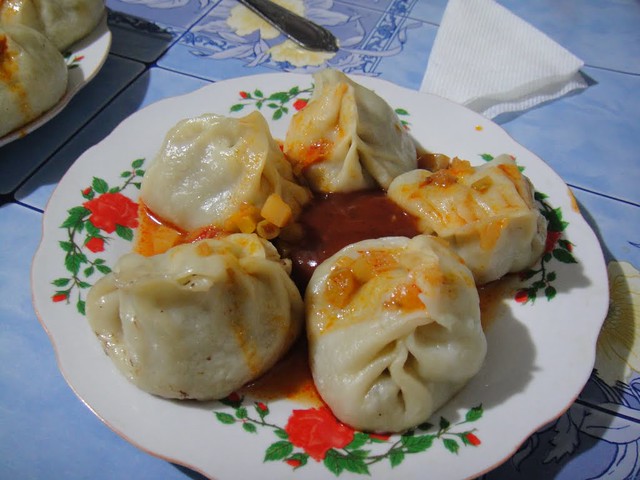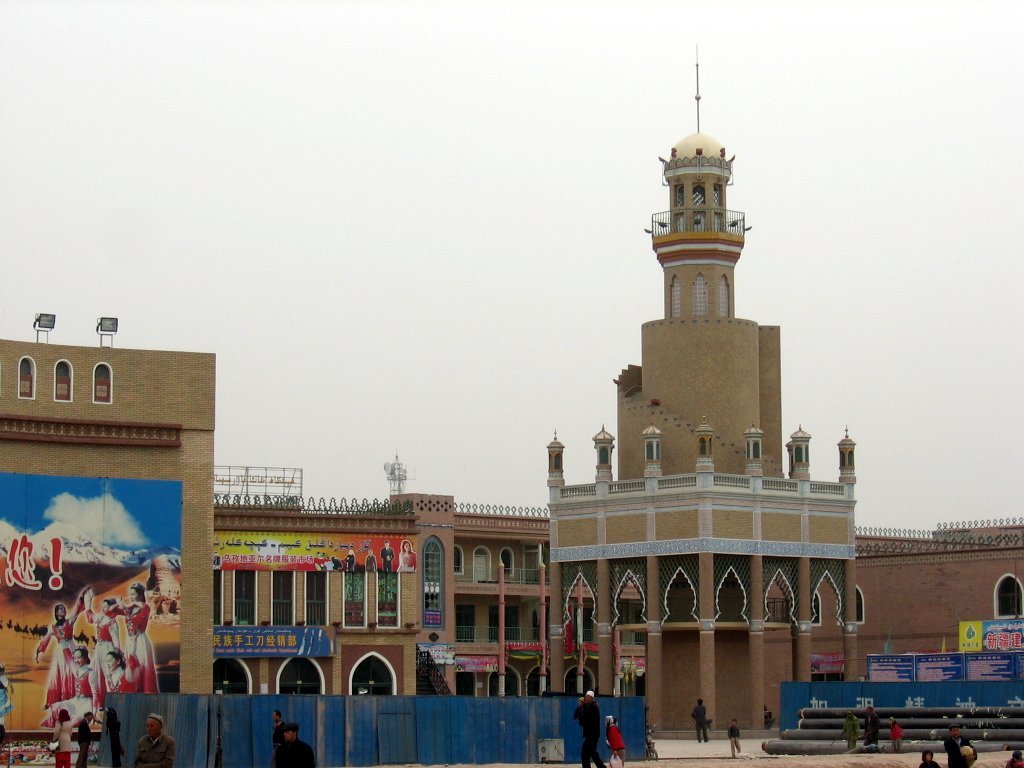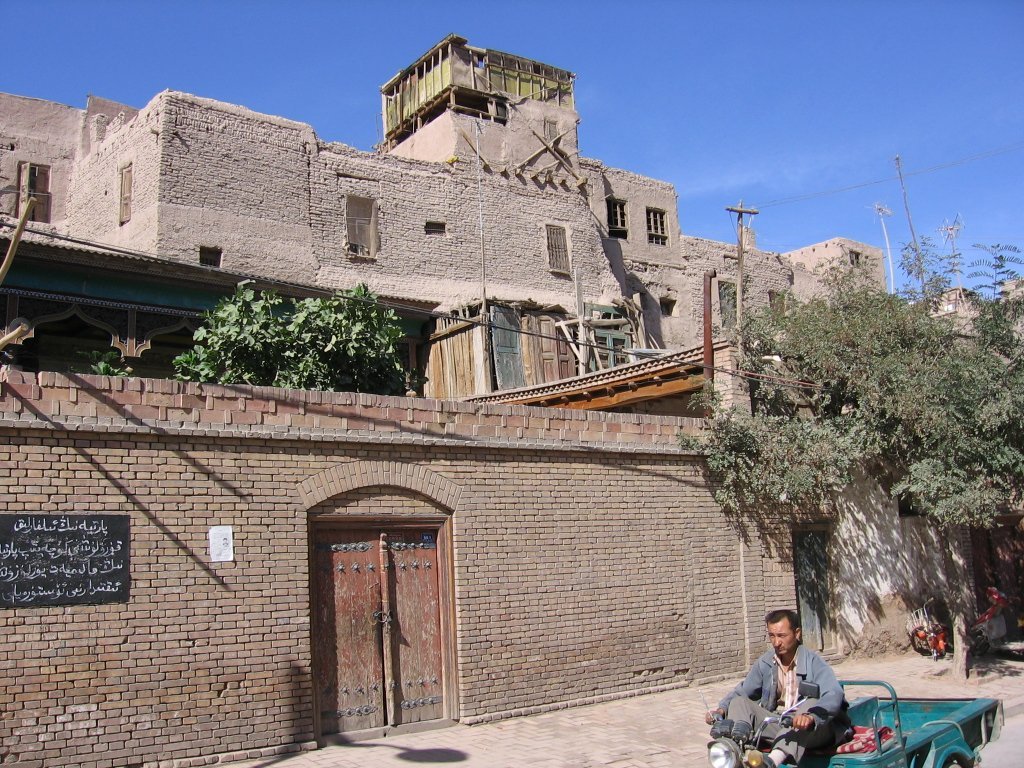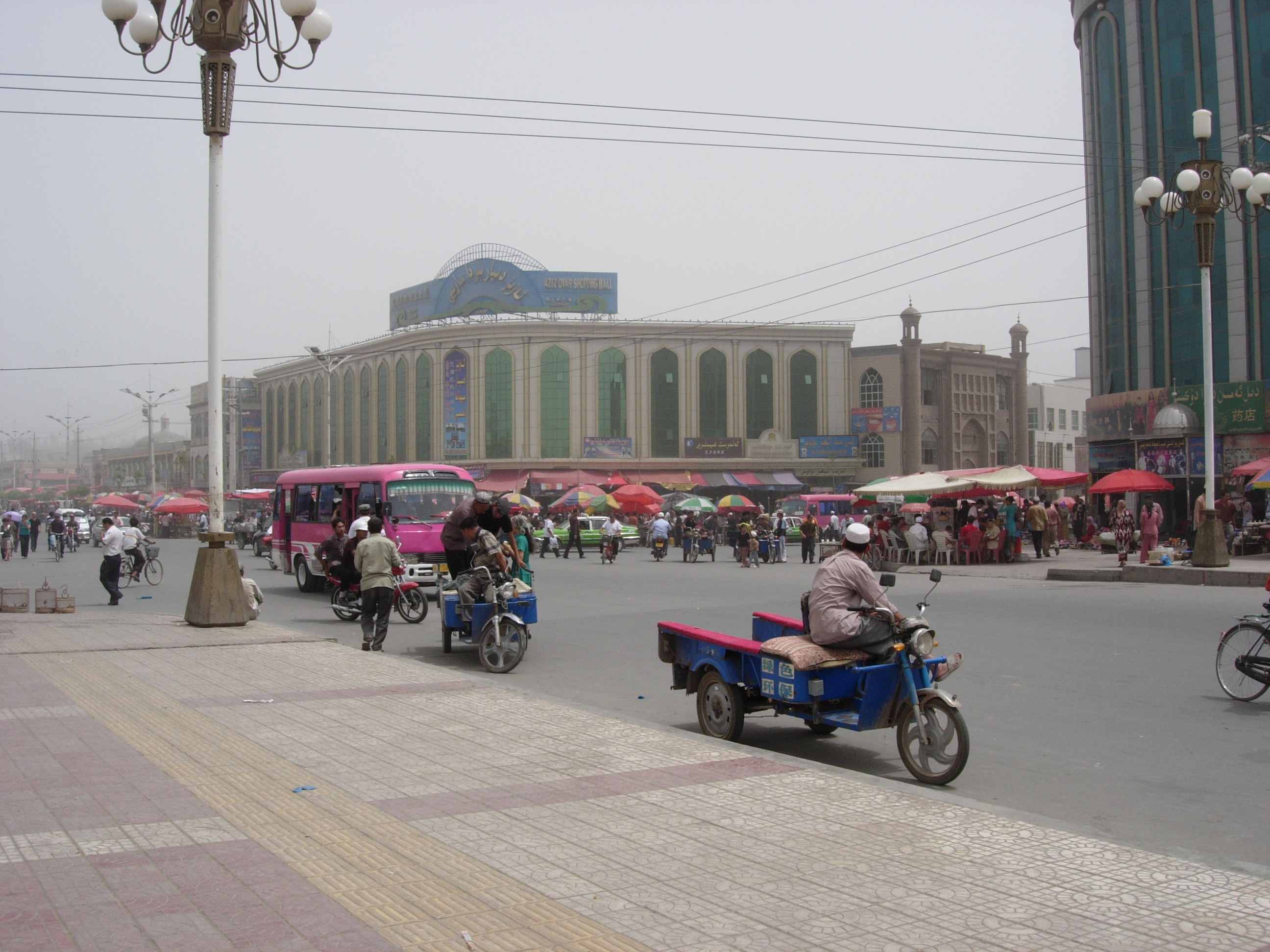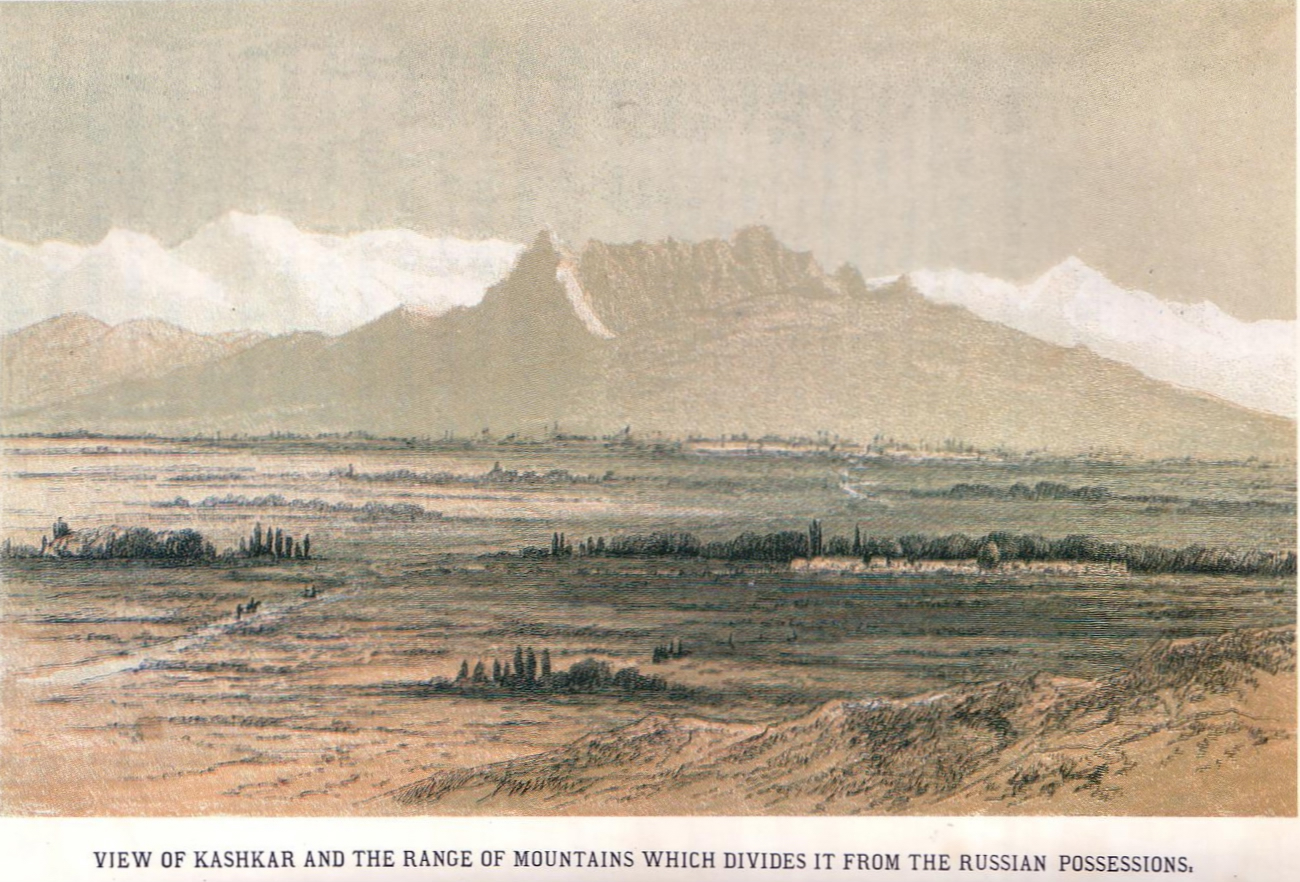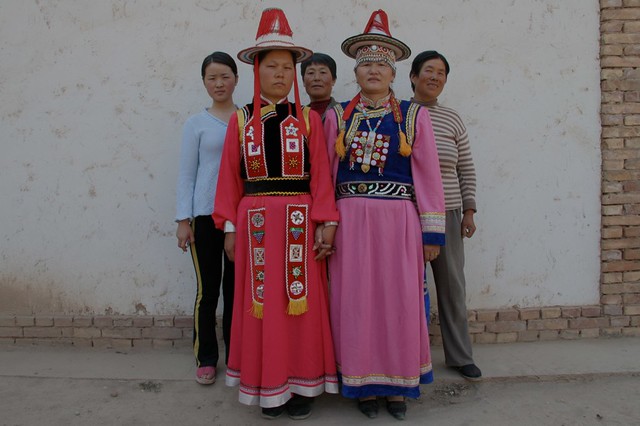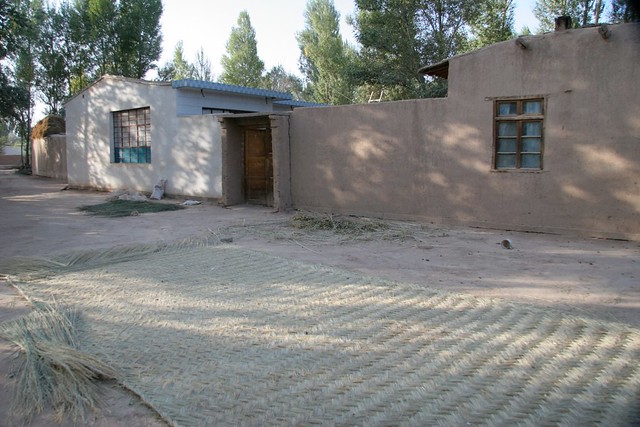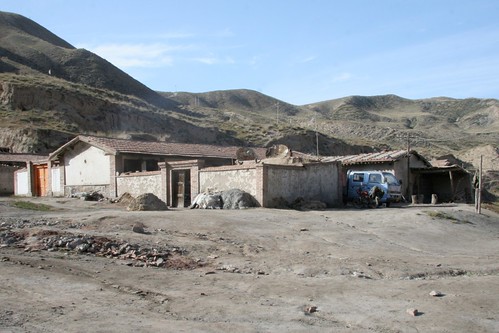Uyghurs People 维吾尔族
The
Uyghurs People 维吾尔族 Turkic ethnic group. There are about 8.5 million Uyghurs in China primarily live in Xinjiang Uyghur Autonomous Region, and about 4,000 live in Taoyuan County 桃源县, Hunan. An estimated 80% of Xinjiang's Uyghurs live in the southwestern portion of the region, the Tarim Basin. Outside of China, significant diasporic communities of Uyghurs exist in the Central Asian countries of Kazakhstan, Kyrgyzstan, and Uzbekistan. Smaller communities are found in Afghanistan, Pakistan, and Turkey.
There's a group, Yugurs 裕固族, Buddhist Yugur.or Yellow Uyghurs, numbered about 15,000 and living in Gansu and are considered as another separated ethnic group
In current usage, Uyghur refers to settled Turkic urban dwellers and farmers of the Tarim Basin and Ili who follow traditional Central Asian sedentary practices, as distinguished from nomadic Turkic populations in Central Asia. However, the Chinese government has also designated as "Uyghur" certain peoples with significantly divergent histories and ancestries from the main group. These include the Loplik people and the Dolan people, who are thought to be closer to the Oirat Mongols and the Kyrgyz.
The Uyghur Khaganate stretched from the Caspian Sea to Manchuria and lasted from AD 745 to 840. In AD 840, following a famine and civil war, the Uyghur Khaganate was overrun by the Kirghiz, another Turkic people. As a result the majority of tribal groups formerly under Uyghur control migrated to what is now northwestern China, especially to the modern Xinjiang Uyghur Autonomous region. Following the collapse of the Uyghur Khaganate, the Uyghurs established kingdoms in present day Gansu and Xinjiang. During the subsequent centuries many Uyghur kingdoms were established and reconquered by different Chinese dynasties. In 1933 and 1944, with the backings of the Soviets, the Uyghur revolted and claimed independent, but they were quickly put down by the Ma Clique of the Muslim Hui Group.
Uyghurs are Sunni Muslim, unlike the Salar and Hui who are also mostly Muslim, oppose coeducation (grouping male and female students together). Conversely, women are generally excluded from public Uyghur Muslim life, also in contrast to Salar and Hui practices. Most studies concluded Uyghurs are genetic 1/2 European and 1/2 East Asian ancestries. Uyghur language belongs to the Uyghuric branch of the Turkic language family, which also includes languages such as Salar and the more distantly related Uzbek, and historically been influenced strongly by Persian and Arabic, and more recently by Mandarin Chinese.
Official portrait of a Uyghur family
An ethnic distribution in Xinjiang
Uyghur concentrated area in green
Old Uyghur alphabets
A wall with ancient Uyghur scripts and Chinese writings
Uyghur Arabic keyboard
Uyghur Arabic scripts
Uyghur dictionaries






















